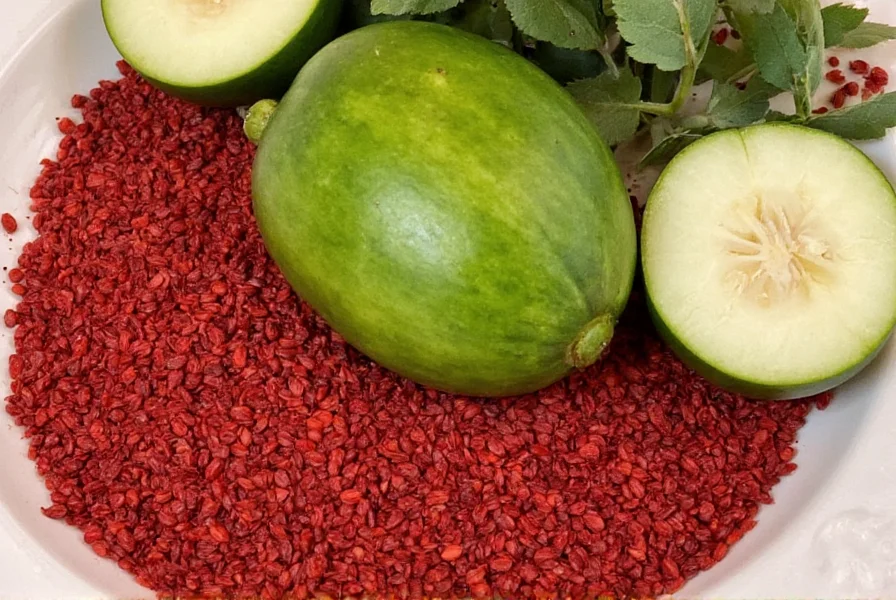Table of Contents
- What Are Achiote Seeds?
- Flavor and Uses
- How to Use Achiote Seeds
- Buying Guide for Achiote Seeds
- Common Mistakes When Using Achiote Seeds
- Frequently Asked Questions
- Conclusion
What Are Achiote Seeds?
Achiote seeds, also known as annatto seeds, are small red-orange seeds from the Bixa orellana tree, native to Central and South America. They're cultivated in tropical regions worldwide and valued for their vibrant color and earthy, slightly peppery flavor. These seeds are essential in Latin American and Caribbean cuisines for both coloring and flavoring dishes.

About This Guide
This guide is created by a trusted culinary resource dedicated to providing accurate and practical information about global ingredients. Our content is reviewed by professional chefs and food scientists to ensure accuracy and reliability. For more information about our editorial standards, visit our About Us page.
Flavor and Uses
The flavor of achiote seeds is nutty, earthy, and slightly spicy with subtle peppery notes. While not as intense as cumin or paprika, they add depth and warmth to dishes. Their most notable characteristic is their ability to impart a rich golden-orange hue, making them indispensable in many Latin American and Caribbean cuisines.
Achiote seeds are commonly used in marinades, sauces, and stews. They're essential in recado rojo, a traditional Mexican spice paste for seasoning meats like chicken, pork, and fish. In the Caribbean, they're used in dishes like calaloo and johnny cakes. Scientific studies confirm their natural dye properties are safe for consumption and widely used in food coloring.
How to Use Achiote Seeds
Using achiote seeds properly enhances their flavor and color potential:
- Toasting: Toast seeds in a dry skillet over medium heat until fragrant and slightly darker. This activates their flavor compounds.
- Grinding: After toasting, grind into powder or use whole. For paste, blend with oil, garlic, onion, and spices.
- Infusing: Steep in hot liquids like broth, oil, or vinegar to extract color and flavor. Ideal for sauces and soups.
- Pairing: Complement with citrus, garlic, chili, and warm spices. Ideal for grilled chicken, roasted vegetables, and rice dishes.

Buying Guide for Achiote Seeds
When purchasing achiote seeds, consider these factors:
| Product | Features | Best For |
|---|---|---|
| Whole Achiote Seeds | Unprocessed, raw seeds | For those who want to toast and grind themselves |
| Ground Achiote Seed Powder | Ready-to-use, finely ground | Convenient for quick recipes and baking |
| Achiote Paste | Blend of seeds, oil, and spices | Perfect for marinating meat and creating rich sauces |
Where to Buy: Available at specialty grocery stores, Latin markets, and reputable online retailers like Amazon or Spice House. Look for organic and non-GMO options.
Quality Tips: Fresh achiote seeds should be bright orange and free from mold or discoloration. Avoid overly dry or brittle seeds, as they may have lost potency. Store in airtight containers away from light and moisture for maximum freshness.

Common Mistakes When Using Achiote Seeds
Even experienced cooks can make these common errors:
- Overusing: A little goes a long way. Excessive amounts can create bitter or overpowering flavors.
- Not toasting: Raw seeds have muted flavor. Always toast for optimal results.
- Using old seeds: Achiote seeds lose potency over time. Use within 2 years for whole seeds, 6-12 months for ground versions.
- Mispairing: Best with warm, savory flavors. Avoid delicate ingredients like seafood unless aiming for bold contrast.
Frequently Asked Questions About Achiote Seeds
What's the difference between achiote and annatto?
Achiote and annatto refer to the same seeds from the Bixa orellana tree. "Achiote" is the Spanish term, while "annatto" is the English term. Both describe the same red-orange seeds used for coloring and flavoring food.
Can achiote seeds stain clothes or surfaces?
Yes, achiote seeds contain a strong natural dye that can stain fabrics and surfaces. When working with them, especially when making paste or infusing oil, be careful to avoid spills. If you get a stain, treat it immediately with a stain remover before washing.
How long do achiote seeds stay fresh?
Whole achiote seeds stay fresh for up to 2 years when stored in an airtight container away from light and moisture. Ground achiote loses potency more quickly and should be used within 6-12 months for best flavor and color.
Are achiote seeds spicy or hot?
No, achiote seeds are not spicy like chili peppers. They have a mild, earthy flavor with subtle peppery notes but produce no heat. Their primary contribution is color and a nutty, slightly peppery flavor rather than spiciness.
Can I substitute paprika for achiote seeds?
While both provide color, they're not perfect substitutes. Paprika gives a redder color and smokier flavor compared to achiote's orange-yellow hue and earthier taste. For color only, you could use paprika, but for authentic flavor in Latin American dishes, achiote is irreplaceable. Turmeric can substitute for color but lacks the distinctive flavor.
Conclusion
Achiote seeds are more than just a colorful addition to your kitchen—they're a versatile and flavorful ingredient that can elevate your cooking in unexpected ways. Whether you're making traditional dishes or experimenting with new recipes, these tiny seeds bring both visual appeal and rich, earthy flavor to the table.
For authentic Latin American and Caribbean cuisine, achiote seeds are essential. When used properly, they provide both color and flavor without overpowering other ingredients. Always store them properly to maintain freshness and potency.










 浙公网安备
33010002000092号
浙公网安备
33010002000092号 浙B2-20120091-4
浙B2-20120091-4